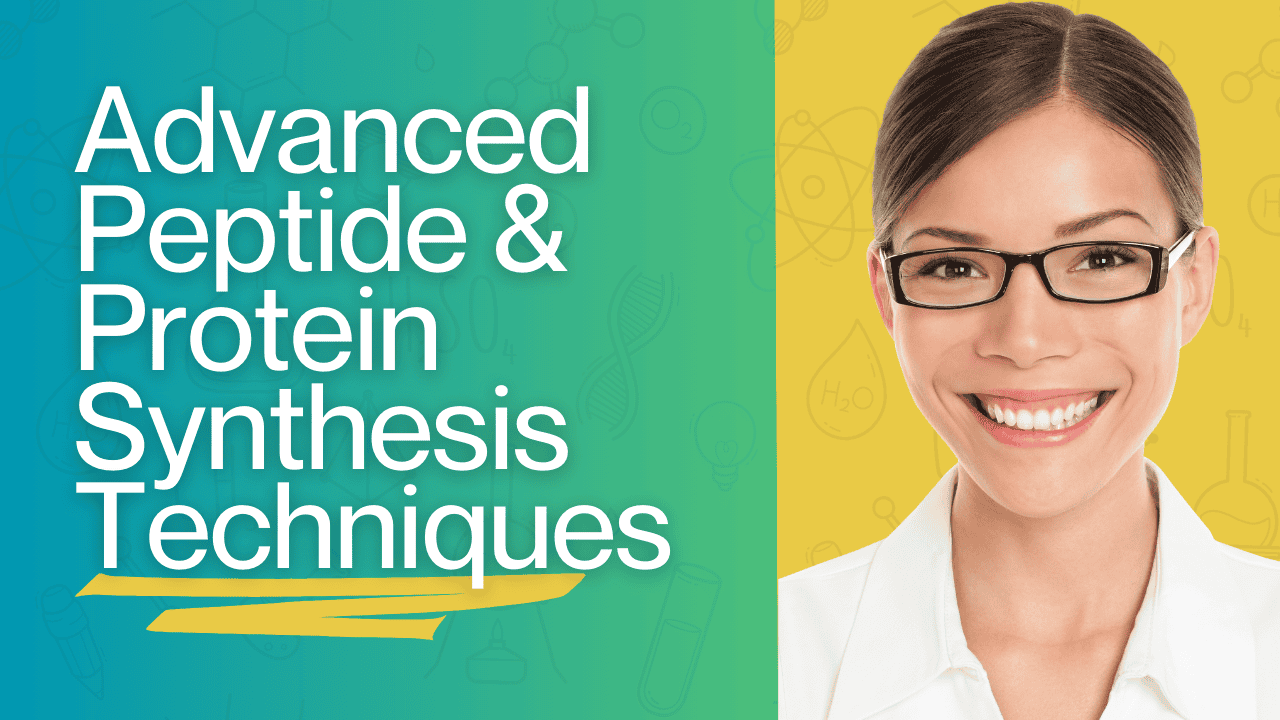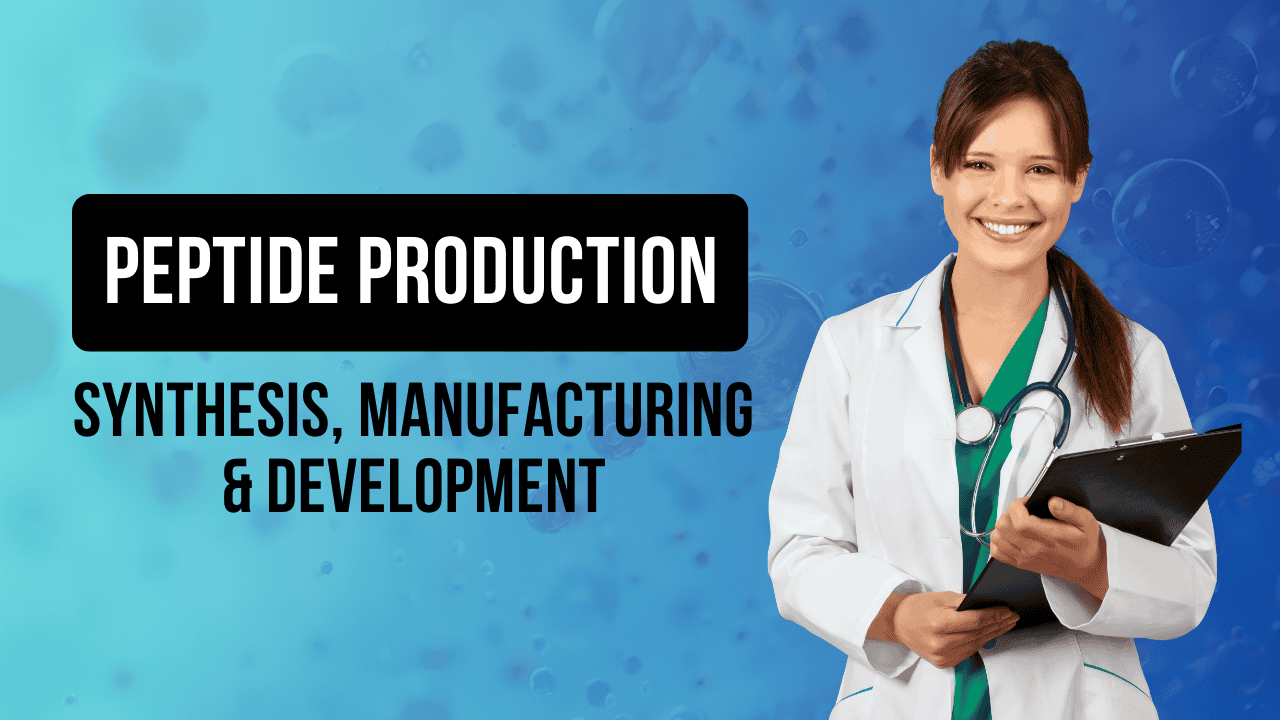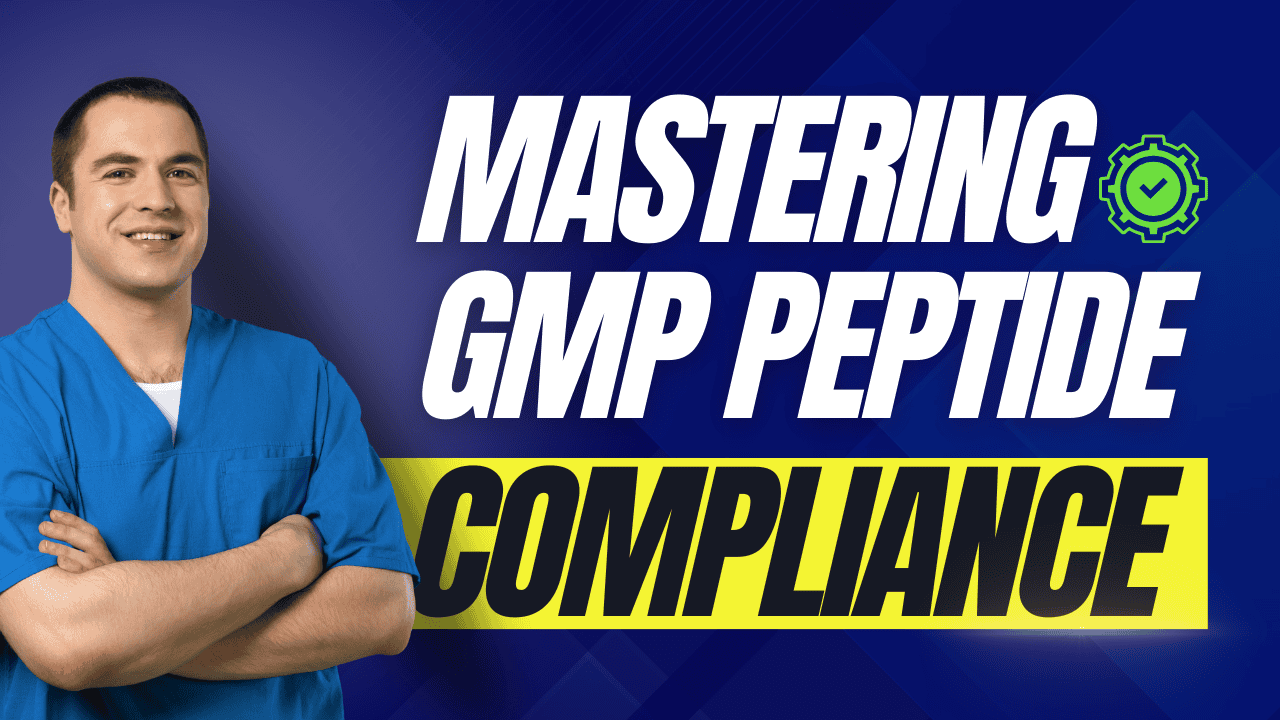

In recent years, the field of biotechnology has dedicated significant resources to the advancement of peptide production for therapeutic applications.
This article explores the groundbreaking developments in recombinant peptide therapy, providing insights into how these innovations can revolutionize disease treatment.
Why is this worth your time?
Because if you’re interested in the future of medicine, this deep dive into peptide synthesis, microbial production, and cutting-edge production methods could be the key to unlocking tomorrow’s cures.
Peptide therapy involves the use of specific peptides to regulate and modulate a variety of bodily functions. Think of peptides as small chains of amino acids, the building blocks of proteins, that can trigger changes in cells and tissues, leading to therapeutic benefits.
Peptides function by binding to receptors on the surface of cells, influencing cell behavior in ways that can help treat diseases. It’s a bit like having a key that fits perfectly into a lock, unleashing the therapeutic potential locked within the cells.
Recombinant peptides are produced using recombinant DNA technology. Essentially, this involves inserting genetic material encoding the target peptide sequence into microbial cells, such as Escherichia coli, to produce the peptides in a laboratory setting. This method is a significant leap over extracting peptides from natural sources.
Natural peptides are directly derived from organisms, while recombinant peptides are engineered in labs. The latter offers greater purity and consistency, eliminating the variability associated with natural sources. It’s the difference between a handcrafted item and one produced on an efficient assembly line.
Traditional peptide production often involves solid-phase peptide synthesis, a method where peptides are assembled step-by-step using chemical reactions. It’s kind of like stringing beads on a necklace, each bead representing an amino acid.
Recombinant peptide production is often preferred due to its scalability, cost-effectiveness, and ability to produce complex peptides that are challenging to synthesize chemically.
Recombinant peptide synthesis involves several steps: inserting the gene coding for the peptide into a plasmid, transforming microbial cells with this plasmid, and allowing these cells to produce the peptide. Think of it as teaching a factory how to build a new product line.
There are significant challenges in recombinant peptide synthesis, including stability of peptides during production and the often low production yield of the desired peptide.
Significant advancements have been made in synthetic peptide production methods, including improved solid-phase and liquid-phase peptide synthesis techniques.
Synthetic peptide production is incredibly versatile, allowing for the creation of peptides with tailored properties for specific therapeutic applications.
Chemical synthesis of peptides involves sequentially adding amino acids to a growing peptide chain. Solid-phase peptide synthesis is a commonly used method here, like building Lego structures one brick at a time.
Chemical synthesis does not rely on living organisms or recombinant DNA, making it suitable for producing shorter peptides and those that are not easily expressed in microbial systems.
Microbial systems, particularly Escherichia coli, are crucial in recombinant peptide production. These tiny biofactories can be engineered to produce peptides efficiently, offering a cost-effective production method.
Using microbes allows for high yield production of peptides, with lower production costs and the ability to produce recombinant peptides that are difficult to synthesize chemically.
Production yield in peptide production can be influenced by factors such as the stability of peptides, efficiency of the microbial systems used, and the optimization of the production process.
Optimizing cultivation conditions, utilizing fusion proteins, and leveraging advanced fermentation techniques all contribute to higher production yields in peptide production.
Large-scale peptide production involves using bioreactors, recombinant methods, and scalable synthesis techniques to produce therapeutic peptides in significant quantities.
Addressing challenges in large-scale production includes ensuring peptide stability , improving purification processes, and minimizing production costs.
Combining synthetic and recombinant methods can leverage the strengths of both approaches, providing flexibility in production and the ability to achieve high-quality peptide synthesis.
For instance, glucagon-like peptide 1 (GLP-1) has been produced using both synthetic and recombinant techniques to maximize yield and efficacy.
Optimizing the production process involves tweaking parameters like pH, temperature, and nutrient supply for microbial cell factories to ensure maximum peptide expression.
Recent advances include automated synthesis platforms and high-throughput screening methods that streamline the production of recombinant peptides.
Recombinant peptide production utilizes genetically modified organisms to produce peptides, offering a scalable and efficient way to generate therapeutic peptides.
Benefits include higher purity and consistency, while challenges include managing recombinant synthesis efficiency and maintaining peptide stability.
Synthetic approaches rely on chemical methods to assemble peptides, while recombinant approaches use living organisms. Each method has its pros and cons depending on the peptide being produced.
Recombinant methods are suitable for large peptides and those with complex sequences, while synthetic methods excel with shorter peptides and those requiring precise modifications.
Cutting-edge methods include the use of robotic synthesis platforms, combined synthetic and recombinant techniques, and advanced purification processes.
These methods lead to higher purity and yield, lower production costs, and the ability to produce novel peptides with enhanced therapeutic properties.
Recent innovations in peptide synthesis include advancements in solid-phase synthesis and the use of peptide fusion techniques to streamline production.
Future directions point towards more efficient recombinant expression systems and enhanced techniques for producing complex bioactive peptides.
Recombinant peptides offer precise targeting, reduced side effects, and high potency, making them ideal for therapeutic applications.
Their high purity, consistency, and ability to be tailored for specific therapeutic needs make recombinant peptides the future of personalized medicine.
Improving efficiency can involve optimizing culture conditions for microbial cells, using fusion proteins to enhance yield, and refining purification processes.
Techniques such as codon optimization and the use of recombinant Escherichia coli strains have demonstrated significant improvements in production efficiency.
Challenges include maintaining peptide stability, achieving high yield production, and ensuring purity through effective purification methods.
Overcoming these challenges requires innovations in production technology, optimized cultivation techniques, and advanced purification strategies.
Standard processes include solid-phase peptide synthesis, where each amino acid is added sequentially, and liquid-phase synthesis, suitable for large-scale production.
Innovations include high-throughput synthesis platforms and more efficient reagents that reduce production time and increase yield.
Microbes, especially Escherichia coli, are revolutionizing peptide production by providing a cost-effective and scalable method to produce peptides.
Specific techniques include using microbial cells to express fusion proteins, optimizing fermentation conditions, and harnessing recombinant DNA technology.
Comparing methods involves assessing factors like yield, cost, scalability, and the complexity of the peptide sequence.
Selecting the optimal method depends on the peptide’s intended use, required purity, and the feasibility of the production process.
The future holds promising developments in peptide therapeutics, with advancements in recombinant technology paving the way for novel treatments.
Emerging trends include the use of peptide therapeutics in personalized medicine, growing interest in antimicrobial peptides, and enhanced recombinant peptide synthesis methods.
Enhancing recombinant peptide synthesis involves optimizing genetic constructs, improving microbial host strains, and leveraging fusion protein techniques.
Real-world applications include the production of therapeutic peptides for treating metabolic disorders, cancer, and infectious diseases.
Quality control involves stringent testing for purity, potency, and stability to ensure therapeutic peptides meet clinical standards.
Measures include advanced analytical techniques such as mass spectrometry and high-performance liquid chromatography (HPLC).
Recombinant peptide production can be highly cost-effective due to the scalability and efficiency of microbial systems.
Strategies include optimizing fermentation conditions, using cost-effective raw materials, and streamlining purification processes.
New technologies include automated synthesis platforms, advanced fermentation techniques, and improved purification methods.
These technologies improve the availability, purity, and efficacy of therapeutic peptides, making them more accessible for clinical use.
Recombinant production is crucial as it allows for the consistent production of high-quality peptides at a scale suitable for therapeutic applications.
Case studies have shown that recombinant production can produce efficient recombinant human peptides, leading to successful treatments for various ailments.
Best practices include optimizing strain selection, refining purification processes, and ensuring rigorous quality control.
Optimized processes have led to the successful production of bioactive peptides used in treating chronic diseases and conditions.
Success is measured through clinical trials, patient outcomes, and ongoing monitoring for efficacy and safety.
Long-term outcomes include improved patient health, reduced disease progression, and enhanced quality of life.
Novel applications include the use of antimicrobial peptides for infection control, therapeutic peptides for cancer treatment, and peptides in drug delivery systems.
The potential is vast, with ongoing research exploring new therapeutic uses for recombinant peptides, including personalized medicine and targeted therapies.
Techniques include optimizing genetic constructs, enhancing fermentation conditions, and employing high-throughput screening methods.
Examples include the use of optimized Escherichia coli strains and advanced fermentation techniques leading to high-level production of target peptides.
Comparing these methods involves evaluating the complexity of the peptide, production costs, and intended use in therapeutic applications.
Synthetic methods are ideal for short peptides, while recombinant methods are better suited for longer peptides or those with complex structures.
Microbial systems, particularly Escherichia coli, are incredibly effective for large-scale peptide production, offering scalability and cost-efficiency.
Innovative approaches include using microbial cells engineered for higher yield production and optimizing bioreactor conditions.
Streamlining involves automating synthesis steps, optimizing microbial fermentation conditions, and refining purification techniques.
Streamlined techniques result in faster production times, reduced costs, and higher yield of pure peptide products.
Advances include the use of peptide fusion techniques, novel drug delivery systems, and enhanced peptide stability for long-term use.
Case studies highlight successful therapeutic applications such as the use of therapeutic peptides in managing diabetes and chronic pain relief.
Detailed methodologies include solid-phase peptide synthesis, recombinant DNA technology for peptide expression, and microbial systems for large-scale production.
Each methodology offers unique advantages, with solid-phase synthesis providing precision, recombinant methods offering scalability, and microbial systems ensuring cost-effectiveness.
Future developments could include more efficient recombinant expression systems, advanced bioreactors, and novel production techniques.
Efficiency can be enhanced through automation, real-time monitoring systems, and advanced purification processes.
Incorporate these insights into your understanding of peptide production, and watch as these small molecules make a big impact on the future of medicine.
Peptide production involves synthesizing peptides either through chemical methods or recombinant DNA technology. Chemical synthesis, like solid-phase peptide synthesis, assembles peptides step-by-step on a solid support. Recombinant peptide production uses microbial systems, such as Escherichia coli, to express recombinant proteins. The synthesis and purification steps ensure high purity and yield of the final product.
Recombinant peptides are produced using recombinant DNA technology, involving the expression of peptides in microbial cells like Escherichia coli. Synthetic peptides, on the other hand, are chemically synthesized in a lab. Recombinant methods often result in higher yields and can produce more complex peptides and proteins, whereas chemical synthesis is typically used for shorter and simpler peptides.
Peptide synthesis by recombinant DNA technology involves inserting a gene encoding the target peptide into microbial cells. The recombinant protein expression system in Escherichia coli is often used for this purpose. This method allows for the cost-effective production of recombinant peptides that are otherwise difficult to synthesize chemically.
Synthetic peptides are typically made using solid-phase peptide synthesis (SPPS), where peptides are assembled by sequentially adding amino acids to a growing chain attached to a solid resin. This method is highly efficient for producing short to medium-length peptides and allows for precise control over the peptide sequence.
The process of making a peptide involves either chemical synthesis or recombinant DNA technology. Chemical synthesis, such as SPPS, builds peptides amino acid by amino acid. The recombinant method involves genetic engineering to express the desired peptide in microbial cells, ensuring high yield and purity. Synthesis and purification are crucial for obtaining the final product.
The body produces peptides by breaking down proteins during digestion or by synthesizing them directly from amino acids in cells. Enzymatic processes within cells assemble amino acids into peptides, like how a factory assembles parts into a finished product. Active peptides are crucial for numerous bodily functions, including hormone regulation and immune responses.
Peptide synthesis refers to chemical or biological methods of assembling peptides. Solid-phase peptide synthesis is a common chemical method, while recombinant DNA technology is often used for larger or more complex peptides. Both methods require careful purification to ensure the final product’s purity and effectiveness.
Polypeptides are produced either through chemical synthesis or recombinant expression systems. Chemically, long chains of amino acids are assembled through sequential reactions. In biological systems, polypeptides are synthesized using Escherichia coli or other microbial hosts engineered to produce large quantities of recombinant protein.
Peptides are manufactured using solid-phase peptide synthesis for small to medium-sized peptides or recombinant DNA technology for larger or more complex peptides. The manufacturing process includes synthesis, purification, and verification of the peptide sequences to ensure they meet the desired specifications for therapeutic use.
Peptides are synthesized either through chemical methods, such as solid-phase peptide synthesis, or through biological methods using microbial systems. The chemical method assembles peptides amino acid by amino acid, whereas the biological method involves the expression of peptides in Escherichia coli or other cells. Both methods require subsequent purification steps to obtain the final, pure peptides.
Dr. Samuel J. Danishefsky is a world-renowned chemist and a pivotal figure in the field of peptide and protein synthesis. With over 40 years of experience in organic chemistry, Dr. Danishefsky has significantly advanced the synthesis of therapeutic peptides. His pioneering techniques in solid-phase peptide synthesis have revolutionized the way complex peptides are manufactured, impacting both academic research and industrial production.
Dr. Danishefsky’s notable publications include:
Dr. Danishefsky’s contributions are recognized globally, having earned him numerous awards, including the prestigious Tetrahedron Prize for Creativity in Organic Chemistry and Bioorganic & Medicinal Chemistry. His research is characterized by its innovation, rigor, and practical application, making him a trusted authority in peptide synthesis and therapeutics.
Dr. Helma Wennemers is a distinguished organic chemist and expert in peptide chemistry, with a focus on the use of peptides as catalysts and materials. With a career spanning over two decades, Dr. Wennemers’ work in the development of bioactive peptides has significantly influenced the field. Her innovative research on the design and application of short peptides in various therapeutic contexts has been essential in advancing peptide drug development.
Key publications by Dr. Wennemers include:
Dr. Wennemers’ research is known for its creativity and practical impact, bridging the gap between fundamental science and real-world applications. Her work has been recognized with multiple awards, including the ERC Advanced Grant and the Swiss Chemical Society Award, underscoring her expertise and authoritative position in the field of peptide research and development.
Ageitos, J. M., Chuah, J., & Numata, K. (2015). Chemo‐Enzymatic synthesis of linear and branched cationic peptides: evaluation as gene carriers. Macromolecular Bioscience, 15(7), 990–1003. https://doi.org/10.1002/mabi.201400487
Baunach, M., Chowdhury, S., Stallforth, P., & Dittmann, E. (2021). The landscape of recombination events that create nonribosomal peptide diversity. Molecular Biology and Evolution, 38(5), 2116–2130. https://doi.org/10.1093/molbev/msab015
Calado, C. R. C., Mannesse, M., Egmond, M., Cabral, J. M. S., & Fonseca, L. P. (2002). Production of wild‐type and peptide fusion cutinases by recombinant Saccharomyces cerevisiae MM01 strains. Biotechnology and Bioengineering, 78(6), 692–698. https://doi.org/10.1002/bit.10252
Ji, M., Liu, Y., Wu, H., Li, S., Duan, H., Shi, J., & Sun, J. (2021). Engineering Bacillus subtilis ATCC 6051a for the production of recombinant catalases. Journal of Industrial Microbiology & Biotechnology, 48(5–6). https://doi.org/10.1093/jimb/kuab024
Kober, L., Zehe, C., & Bode, J. (2012). Optimized signal peptides for the development of high expressing CHO cell lines. Biotechnology and Bioengineering, 110(4), 1164–1173. https://doi.org/10.1002/bit.24776
Metlitskaia, L., Cabralda, J. E., Suleman, D., Kerry, C., Brinkman, J., Bartfeld, D., & Guarna, M. M. (2004). Recombinant antimicrobial peptides efficiently produced using novel cloning and purification processes. Biotechnology and Applied Biochemistry, 39(3), 339–345. https://doi.org/10.1042/ba20030100
Zhao, S., Meng, J., & Luan, Y. (2021). LNCRNA-Encoded short peptides identification using feature subset recombination and ensemble learning. Interdisciplinary Sciences Computational Life Sciences, 14(1), 101–112. https://doi.org/10.1007/s12539-021-00464-1
ALL ARTICLES AND PRODUCT INFORMATION PROVIDED ON THIS WEBSITE ARE FOR INFORMATIONAL AND EDUCATIONAL PURPOSES ONLY. The products offered on this website are intended solely for research and laboratory use. These products are not intended for human or animal consumption. They are not medicines or drugs and have not been evaluated or approved by the FDA to diagnose, treat, cure, or prevent any disease or medical condition. Any form of bodily introduction is strictly prohibited by law.



Discount Applied Successfully!
Your savings have been added to the cart.